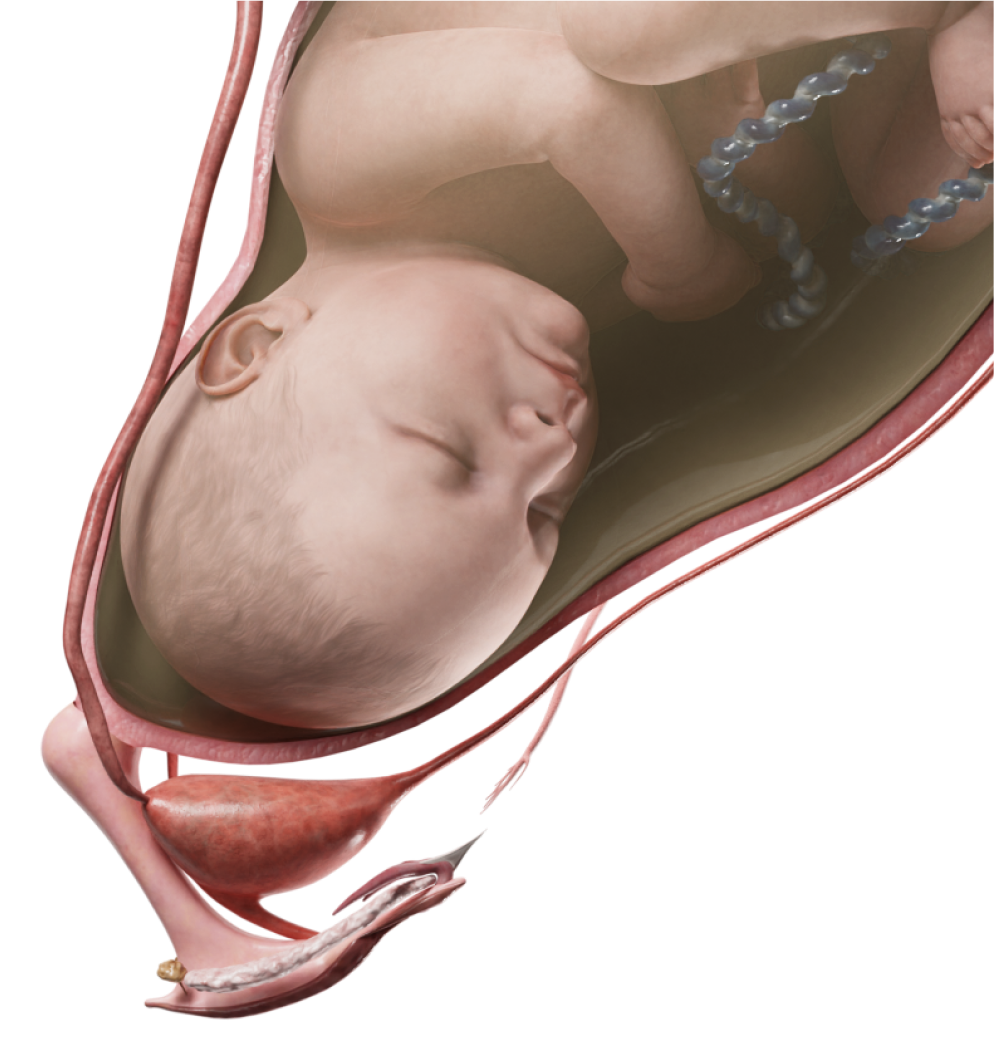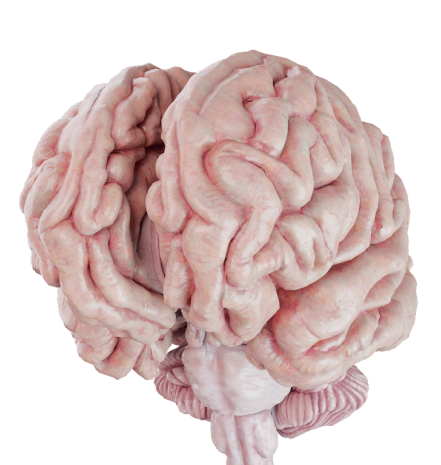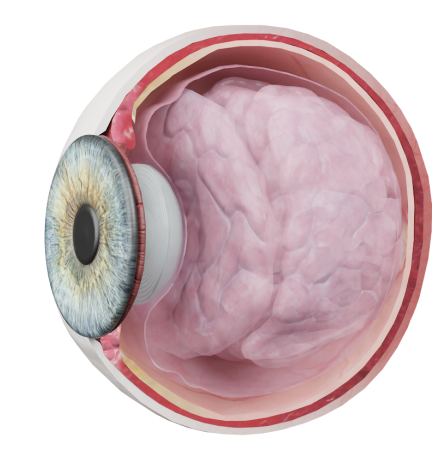Ear tumors
Atheroma of the earlobe, also known as sebaceous cyst, is a benign soft tissue tumor located in the earlobe.
Cutaneous horn (fibrokeratoma, horny keratoma) is an abnormal growth on the skin of the auricle that can be either benign or precancerous.
Basal cell carcinoma (BCC) of the auricle, also known as basalioma, is a malignant neoplasm derived from nonkeratinizing cells of the basal layer of the epidermis. BCC is the most common form of skin cancer.
The second most common type of skin cancer is squamous cell carcinoma (SCC). This is also a malignant tumor, but unlike BCC, it originates from epidermal keratinocytes
Glomus tumor, also known as paraganglioma, is a benign neoplasm of the tympanic cavity that is typically located in the area of the tympanic plexus or the superior bulb of the internal jugular vein.
Congenital cholesteatoma is an abnormal growth in the middle ear behind an intact tympanic membrane. It develops prenatally and is not associated with an inflammatory process.
Vestibular schwannoma (VS), also known as acoustic neuroma, is a noncancerous tumor arising from the nerve sheath cells (Schwann cells) of the vestibulocochlear nerve.
Classification
External ear neoplasms:
- Atheroma of earlobe;
- Cutaneous horn of auricle;
- Basal cell carcinoma of auricle;
- Squamous cell carcinoma of auricle.
Middle ear neoplasms:
- Glomus tumor (paraganglioma);
- Congenital cholesteatoma.
Internal ear neoplasms:
- Vestibular schwannoma.
Etiology
Atheroma of the earlobe develops when the sebaceous gland duct becomes obstructed. A narrow excretory duct of the sebaceous gland, hypersecretion of sebum, endocrine disorders, and poor personal hygiene, are the main predisposing factors. Atheroma can fester if it is infected.
The underlying causes of cutaneous horn are still unknown. This disease is more common in the elderly and usually affects areas of skin that are constantly rubbed. Prolonged exposure to UV radiation, human papillomavirus (HPV), and a family history of similar lesions in first-degree relatives are considered the main risk factors.
Being the most common form of skin cancer, basal cell carcinoma (BCC) is also the most prevalent of all cancers. Excessive exposure to UV radiation is recognized as the primary risk factor for BCC. In addition, people who have light skin and are overexposed to sunlight (e.g., outdoor workers) have a greater risk of developing this condition.
Squamous cell carcinoma (SCC) is also associated with cumulative exposure to UV radiation. It is worth noting that pathologically altered tissues, such as actinic keratosis, chronic ulcers, or scars, are more susceptible to malignant transformation.
The most common tumor of the middle ear is nonchromaffin paraganglioma, commonly referred to as glomus tumor. This disease is considered sporadic, and its origin remains unclear. Nevertheless, about 10% of cases are thought to be hereditary.
Although the exact causes of congenital cholesteatoma have not been determined yet, several theories have been proposed to explain its origin. Most of them are based on impaired cell migration during embryogenesis. It is believed that this process can occur both prior to the complete development of the tympanic ring and when the tympanic membrane and its structures are fully formed. The latter is possible if a prenatal infection develops. In this case, cells migrate through microperforations that heal postnatally. Another theory suggests that the amniotic fluid of the tympanic cavity in newborns contains squamous cells that produce keratin and serve as a matrix for cholesteatoma.
Vestibular schwannoma is a well-encapsulated, slow-growing nerve sheath tumor composed exclusively of Schwann cells of the vestibulocochlear nerve. Its incidence and causes are unknown. This neoplasm is more common in individuals with neurofibromatosis type 2.
Anatomic Pathology
An atheroma of the earlobe is a small encapsulated spherical cavity filled with a whitish substance (sebum), which is located deep in the earlobe. In cases of a secondary infection, the atheroma can fester. It becomes significantly enlarged and tender. Typically, the skin around a festering atheroma appears red. Fluctuation can also be observed.
A cutaneous horn is a firm, flesh-colored growth with clear boundaries. It typically protrudes 1–2 cm above the skin surface, and its length often exceeds its diameter at the base. This lesion originates from basal keratinocytes and is composed of compact keratin. It is characterized by slow growth without affecting the auricle cartilage. Please note that ulceration and lymphatic metastases are not typical.
Basal cell carcinoma of the auricle can be divided into several clinical variants:
- Nodular: a solid, round papule above the surface of the skin that may be crusted or eroded in the center.
- Superficial: a small, scaly, erythematous, irregular plaque of varying shades.
- Ulcerative: a skin lesion with undermined irregular edges.
- Pigmented: dark-colored raised plaque.
- Morpheaform (sclerosing): a flat, waxy, scar-like plaque with indistinct borders and prominent telangiectasia.
BCC arises from the basal layer of the epidermis. The histological features include epithelial cells with hyperchromatic nuclei and scant cytoplasm.
Atypical cells with intercellular junctions (desmosomes) and varying degrees of keratinization are morphological characteristics of squamous cell carcinoma. This tumor spreads into surrounding tissues (locally invasive). Its clinical appearance is highly variable. Therefore, any abnormal skin lesion with unclear boundaries and an uneven color that does not heal and may bleed should be paid special attention to.
Paraganglioma is a highly vascularized neuroectodermal tumor that arises from the parasympathetic ganglia as a result of neural crest cell migration during embryonic development. Females are more susceptible to this disease, with incidence rates in males being 4–6 times lower. The histological findings include neuroendocrine cells arranged in distinctive clusters surrounded by fibrovascular septa and sustentacular (supporting) cells. Due to the expansive growth pattern, glomus tumors can compress adjacent cranial nerves (facial, glossopharyngeal, vagus, accessory, and trigeminal nerves). Otoscopy usually reveals a retrotympanic bright reddish mass that sometimes causes tympanic bulging. In some cases, it can protrude into the external auditory canal as a bleeding polyp. The primary growth zone is located near the tympanic plexus on the medial wall of the tympanic cavity or in the superior bulb of the internal jugular vein. Malignant transformation is very rare (5 %) and is defined as distant metastases that are typically found in the lungs, lymph nodes, liver, vertebral column, ribs, and spleen.
Paragangliomas can be subdivided into four types according to location:
- Glomus tympanicum tumors, limited to the tympanic cavity;
- Glomus jugulare tumors, which are limited to the middle ear cavity and the superior bulb of the jugular vein and do not affect the bone;
- Glomus jugulare tumors, which involve the mastoid process of the temporal bone;
- Glomus jugulare tumors, which spread into the cranial cavity.
Congenital cholesteatoma is defined as an abnormal accumulation of keratinizing stratified squamous epithelium within a retraction pocket of the tympanic membrane. It appears as a sac in the tympanic cavity that gradually grows and becomes covered with cholesterol masses. As cholesteatoma enlarges, it causes erosion and destruction of the auditory ossicles, resulting in conductive hearing loss. Typical otoscopy findings include a pearly white mass behind an intact tympanic membrane, usually in the anterosuperior quadrant. The diagnosis of congenital cholesteatoma can be confirmed only if the tympanic membrane is intact and there is no history of prior otitis media or otologic surgical procedures.
Vestibular schwannoma usually originates from the superior part of the vestibulocochlear nerve and develops within the internal auditory canal (IAC). It is a slow-growing tumor with an expansive growth pattern. Clinically, VS can be divided into two types:
- Medial: located in the cerebellopontine angle;
- Lateral: located in the IAC; can gradually spread into the cranial cavity to the cerebellopontine angle.
Although both types of VS do not spread to other parts of the body (metastasize), they can grow large enough (>2.5 cm) to compress adjacent structures (e.g., cranial nerves, cerebellum, and brainstem). Histologically, the VS is characterized by the proliferation of fusiform Schwann cells with indistinct cytoplasmic borders and Verocay bodies (acellular zones surrounded by spindle-shaped nuclei).
Clinical Manifestations
An atheroma of the earlobe is a cosmetic imperfection that does not usually cause any symptoms. However, if it suppurates, severe tenderness may occur.
Another cosmetic disfigurement is the cutaneous horn. It can be frequently traumatized as it protrudes significantly above the skin surface. Cases of cutaneous horns ranging from 6 to 10 cm long have been described in the literature.
BCC of the auricle is a slow-growing translucent skin lesion of heterogeneous color accompanied by ulceration. It rarely metastasizes but is locally invasive and may affect surrounding healthy tissues, leading to significant cosmetic imperfections. Moreover, it has a high risk of recurrence.
SCC of the auricle presents as a slightly raised, erythematous, scaly plaque that may itch or bleed. Ulceration is also common. It is a rapidly-growing neoplasm that, in addition, can quickly metastasize. The latter is often associated with poor outcomes and may even be fatal. Over the last decade, the incidence of SCC has increased, with a higher prevalence in men (male-to-female ratio being 3:1). Moreover, immunocompromised patients (e.g., individuals receiving immunosuppressive therapy post-transplantation) typically have a worse prognosis. Please note that some tumor characteristics are associated with a higher risk of recurrence. These include the diameter of a lesion (> 2 cm), its depth (> 2 mm), and location (scalp, ears, or nose).
Clinical manifestations of glomus tympanicum tumors include hearing loss and unilateral pulsatile tinnitus. It is noteworthy that initially hearing loss is conductive, but later a sensorineural component may be added, leading to mixed hearing loss. Cranial nerve palsies are typical for glomus jugulare tumors due to a blockage of the jugular foramen. The glossopharyngeal, vagus, and accessory nerves are most frequently affected, while hypoglossal nerve palsy is less common. Furthermore, there may be signs and symptoms of cerebellar and brain compression, as well as facial nerve palsy, if the tumor spreads into the cranial cavity.
Congenital cholesteatoma can be asymptomatic for a long time. However, as the tumor enlarges, hearing loss, vestibular disorders, facial nerve palsy, or, in severe cases, intracranial complications may develop. These symptoms usually prompt patients to seek medical help.
Vestibular schwannoma is characterized by both general and local symptoms, which vary depending on the location of the tumor. Like congenital cholesteatoma, VS can also remain asymptomatic for a long time. Local symptoms include vestibulocochlear nerve compression and associated unilateral sensorineural hearing loss (no loudness recruitment phenomenon or acoustic reflex), tinnitus, and vestibular manifestations (spontaneous nystagmus beating towards the healthy ear, dizziness). Plus, paresis of the abducens, facial, and trigeminal nerves may occur. In cases of cerebellar compression, dysdiadochokinesia and ataxia are typically observed. Significant tumor enlargement can lead to increased intracranial pressure, which can manifest with profuse vomiting.
Diagnosis
An atheroma of the earlobe is diagnosed by its clinical appearance. However, due to its similarity with other subcutaneous formations (e.g., fibroma, lipoma), a definitive diagnosis is made based on the results of a pathomorphologic examination.
A cutaneous horn is evident upon physical examination. A detailed medical history can also be helpful to determine its origin.
To confirm a diagnosis of carcinoma, a targeted biopsy followed by a histological examination is required.
Otoscopy is an essential first step in the diagnosis of paraganglioma and cholesteatoma. After that, a high-resolution CT (HRCT) or MRI with a gadolinium-based contrast agent (GBCA) is performed to determine the exact location of the paraganglioma and its vascular anatomy. To assess cholesteatoma, diffusion-weighted MRI (DWI-MRI) is used. Before surgery, patients with paraganglioma should undergo angiography and endovascular embolization of the feeding vessels. If confirmed, healthy family members are advised to undergo genetic testing to detect a tumor at an early stage.
If a vestibular schwannoma is suspected, a comprehensive audiological examination (including pure tone and speech audiometry and auditory evoked potential) and vestibular testing are required. An MRI with GBCA helps establish the tumor location.
Treatment
Atheromas should be removed surgically. Particular attention should be paid to separation and excision of the tumor capsule to prevent recurrence. If atheroma suppurates, the ‘incision and drainage’ (I&D) procedure is performed. This is when the cavity of the festered atheroma is cut open to evacuate pus, and then a drain tube is placed. After that, an aseptic dressing is applied. It should be changed regularly until complete recovery.
Surgical excision is the most common treatment for precancerous diseases (e.g., cutaneous horn) and carcinomas. During this procedure, a surgeon removes the affected skin area with some healthy tissue around it, which is referred to as surgical margin. This is done to ensure the complete removal of pathologically altered tissues. If surgery is contraindicated, radiation therapy is used.
Surgery is the only way to treat cholesteatoma. If indicated, tympanoplasty can also be performed.
The preferred treatment for paragangliomas and VS is total surgical removal. If it is not an option, then partial resection followed by gamma knife radiosurgery is performed. Radiation therapy alone can be used in patients with contraindications to surgery or in the elderly. A “watch and wait” approach is usually recommended for small (~1 cm) and asymptomatic schwannomas.
Please note that histopathological examination of all removed tissues is mandatory.










